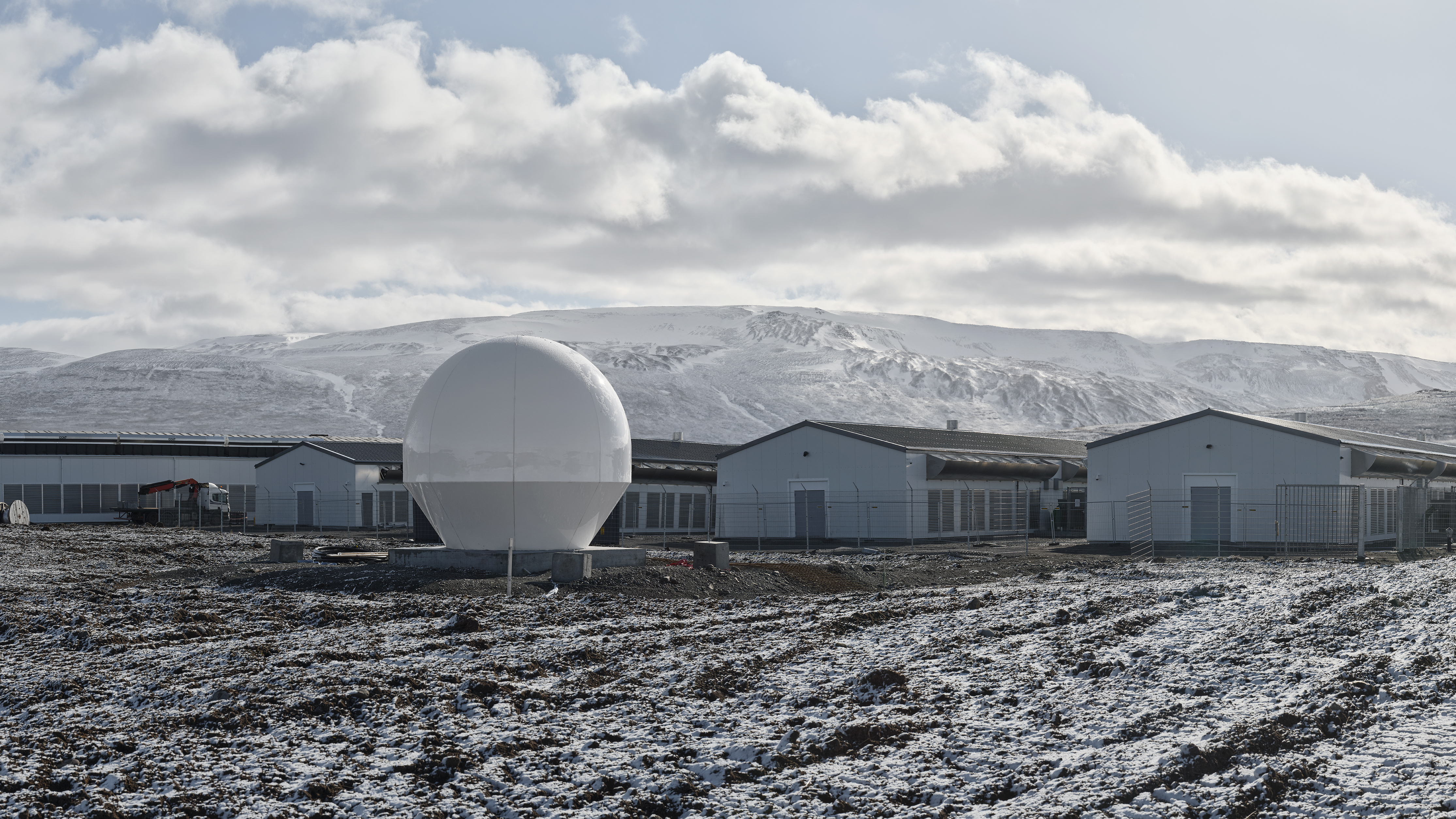Can a completely sustainable data center truly ever exist?
The future of the data center looks relatively green

With regions around the world facing a deepening energy crisis as a result of supply chain disruptions, geopolitical turmoil, and rising prices, the value of having reliable and stable access to renewable energy and resilient infrastructure is key.
Currently, data centers consume 3% of the electricity energy supply worldwide and contribute roughly 2% of the greenhouse gas emissions, according to Climate Neutral Group, so are not just a significant burden on the current energy supply market, but are set to see an exponential growth as the amount of data being produced rises.
Very large data centers are expected to only continue growing, which means that the requirements of energy will also increase in the next decade, and touring a turn-key data center in Iceland powered by a mix of hydro-electric power and wind, it’s clear that much is being done to ensure a lot of the greenwashing that happens in the colocation sector reduces and transparency increases.
Energy crisis overload
Following the recent conflict in Ukraine, it has become clear just how reliant the rest of Europe is on the gas imported from Russia, Gisli Kr., Chief Commercial Officer at Icelandic firm atnorth told TechRadar Pro.
“It has also exposed other problems that have been hiding under that import of gas. Local production of energy being on fossil fuels gas is produced close to where it’s used but it’s heavily reliant on the distribution of these fossil fuels from other countries,” he explains.
“It will be interesting to monitor this, this winter as energy usage increases. Price trends just over the summer months have been quite incredible and as a result, I cannot predict how it’s going to go because we are facing a serious problem in central Europe.”
This turmoil means organizations that are using a lot of energy are increasingly looking towards regions that have plenty of energy for possible relocation.
Are you a pro? Subscribe to our newsletter
Sign up to the TechRadar Pro newsletter to get all the top news, opinion, features and guidance your business needs to succeed!
“This is the compelling event that’s causing organizations to think outside the box,” Kr. notes, “because although the fact still remains that it is comfortable to keep things close, when the situation is as it is now, it pushes these organizations to search further out for energy.”
“Regions that are manufacturing energy in a responsible manner and are less reliant on external supplies of fossil fuels to create energy are what organizations are now looking for when it comes to delivering their products, services or manufacturing raw materials.”
The future of the data center
It’s no secret that the data center industry is on a growth trajectory, and has been for the past decade or more, with . new workloads such as Artificial Intelligence (AI) and Machine Learning (ML) driving even more consumption of data center space and power.
“Everything that you have on your phone and computers is powered by a data center. Many organizations are re-thinking the way they are using data centers, and what’s incredibly exciting for me is that the sustainability aspect of the colocation industry is becoming mainstream,” says Kr.
“Sustainability comes at a lower cost because we are moving workloads closer to the power production, which is beneficial for local environments. We are also seeing customers asking for the reuse of heat to be mandatory. This is a sign of how corporate thinking is changing and becoming more mature when it comes to the responsive usage of data centers. These companies identify data centers as a part of their core operations to be able to conduct business.”
As renewable energy becomes more important, Bjorn Brynjulfsson, CEO of Borealis Data Center, told TechRadar Pro that the quickest way to help the environment is to move data processing near the sustainable energy sources and transmit the data to the consumer.
“Transmitting data through fiber is very convenient and cost effective and allows for utilizing the renewable energy at the source rather than having to move the energy around which is increasingly challenging and costly,” he explains.

What about edge data centers
It’s easy to overlook edge data centers when analyzing the future of the colocation data center sector. In the beginning of the computer age, everyone had their own processing power at home or in the office, but since then, technology and connectivity has evolved rapidly.
You can now create more efficiency by combining that computing power in a single place and then shifting the data back and forth, and Kr. thinks that this is going to be the biggest efficiency you’ll get out of large workloads.
“The drive towards the edge data center is mainly when there’s an application that caters to you and has to have low latency. The industry needs both as it’s not a case of one size fitting all. That application might be delivering data and resources to you in a very efficient manner because you need it right when you press a button, but heavy processing power does not belong in the big cities for a few reasons,” Kr. adds.
“Scale is one of the reasons, as well as the footprint and land being more expensive. To build the edge data center is more expensive. If you have a very small footprint, let’s say one server, it might not matter that the data center is 10 or even 20 times more expensive, but what if you have 1,000 servers, then the 20 times more expensive data center makes no sense.”
That trend is particularly noticeable in cities such as London, UK, where workloads are moving out of the city simply because it’s more efficient to do so. Some businesses are moving workloads outside London but within the rest of the country, while others are moving to the Nordics, which cuts the price even more.
“It is becoming increasingly popular to have heat pumps in your house, but that’s efficient at a small scale - it is always better when you can do it at a larger scale,” Kr. says.
“But one big problem today is that no one is penalized for carbon footprint from data centers, and there's a growing sitma around the data center industry regarding its carbon footprint.”
Ammonia as a possible solution
Most data centers get their primary power from the wider municipal electric grid, but there are a lot of new developments in the colocation sector to make that transaction 100% green.
Fujitsu, which operates data centers all over the world for internal use and on behalf of its customers, has been toying with the idea of using ammonia to increase power efficiency and the density in the systems.
Surya Josyula, Senior Director, Technology Strategy Unit at Fujitsu told TechRadar Pro that the company has been looking at many ways of powering their data centers through the use of green energy over the last 18 months.
“We looked at different fuels and it turns out that ammonia could be a very interesting product to power data centers. It has interesting properties and we also found good mapping between the needs of the ammonia ecosystem and Fujitsu technologies, particularly high performance computing and AI,” says Josyula.
There are two ways using ammonia will work, Josyula explains. “The first is to take ammonia and directly burn it to generate electricity or convert it into hydrogen and use that as a source of fuel. The way green ammonia will work is that we will create it from nitrogen in the air and hydrogen in the water, with clean electricity.
“Ammonia has been around for the last 100 years and is traditionally produced using the Haber-Bosch process, which is a very energy intensive and polluting process. Ammonia is the primary source of fertilizer in the world today and it’s a chemical that people know well. The question is, can we use it as a source of energy moving forward.”
Ammonia liquifies at -30 degrees celsius, similar to propane or LPG (liquefied petroleum gas) and can be stored, transported and stored again as a liquid.
“Because the chemistry and technology is not complex, the research has led to the development of hundreds of gigawatts of renewable electricity generation - wind and solar energy - being developed to serve local electricity markets with electricity,” says Steve Crolius, President, Carbon Neutral Consulting.
“In some instances, there could be a surplus of electricity beyond what the immediate market needs, so therefore, the electricity will be turned into hydrogen and the hydrogen will be turned into ammonia.”
Josyula adds that using ammonia is a multi-step process and if data center owners want to make sure the ammonia they are using is green, they will need to ensure that the energy supply that is being used to power it, comes from green sources.
“We think that the roll out of ammonia will be used as a backup source of power for data centers when the other sources are not available,” he concludes.
The use of ammonia to power data centers is still in the early stages of development and in terms of cost, it will depend on the need of the deployment and how much power each data center will require.
It’s likely to be more expensive but not enough to change the ecosystem of the data center industry.
The future of the data center sector looks increasingly green as companies continue committing to innovative sustainability and renewable strategies that include renewable sources of power, rainwater harvesting, zero water cooling systems, recycling, and waste management to name a few.
This all means that the dream of a completely sustainable data center is not here yet, but could soon be closer than ever.
- Check out our list of the best dedicated server hosting providers

Abigail is a B2B Editor that specializes in web hosting and website builder news, features and reviews at TechRadar Pro. She has been a B2B journalist for more than five years covering a wide range of topics in the technology sector from colocation and cloud to data centers and telecommunications. As a B2B web hosting and website builder editor, Abigail also writes how-to guides and deals for the sector, keeping up to date with the latest trends in the hosting industry. Abigail is also extremely keen on commissioning contributed content from experts in the web hosting and website builder field.